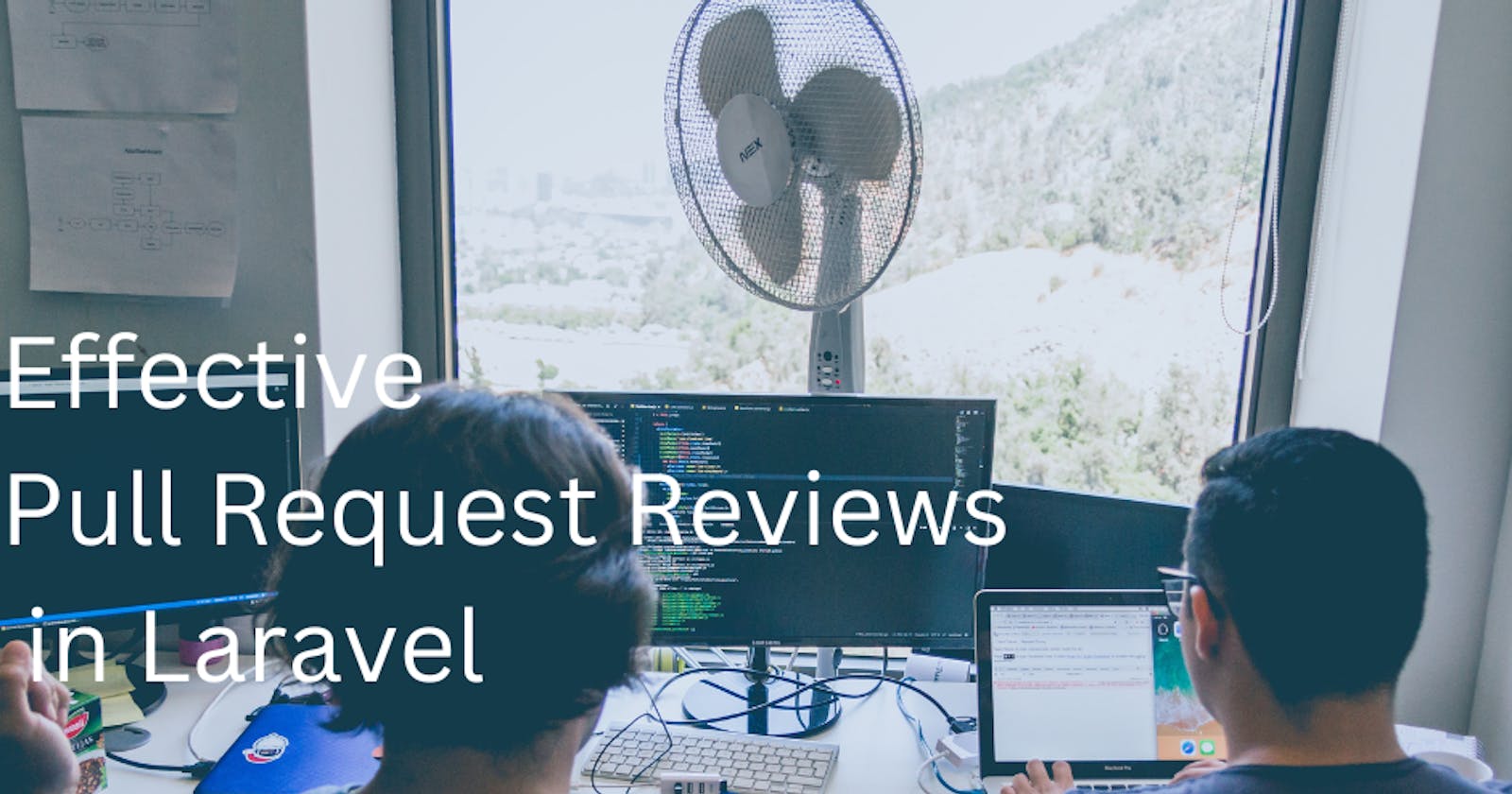Introduction
Hey there! Pull Request (PR) reviews are super important in making sure that the code in Laravel projects is high-quality, easy to maintain, and reliable. Whether you're a pro at Laravel or just starting, this guide is here to help you understand why PR reviews matter and how to do them well. We'll even show you some real-world examples to make things more clear!
Why Pull Request Reviews Matter
Pull Request reviews are not just about catching bugs; they are a vital part of the collaborative development process in Laravel. Here's why they matter:
Code Quality: PR reviews ensure that code adheres to coding standards, follows Laravel best practices, and is clean and maintainable.
Bug Prevention: Reviews help catch bugs, vulnerabilities, and potential issues before they find their way into the production codebase.
Knowledge Sharing: They foster knowledge exchange among team members, enabling learning and professional growth.
Collaboration: Multiple sets of eyes on code often lead to better solutions, reducing technical debt, and more resilient applications.
1. Laravel-specific Considerations
In Laravel PR reviews, it's essential to consider Laravel's unique features and conventions. Here are some areas to focus on:
Sample Code: Reviewing Laravel-specific code:
// Check Laravel-specific code like routing, controllers, and Blade templates
Route::get('/example', 'ExampleController@index');
// Ensure Eloquent ORM is used effectively and relationships are set up correctly
$user->posts()->create([...]);
2. Code Style and Best Practices
Consistency in code style is vital for maintainability. Laravel projects often adhere to the PSR-2 coding standard, but check your project's specific guidelines.
Sample Code: Reviewing code style and adherence to Laravel coding standards:
// Check for consistent indentation, naming conventions, and PHPDoc comments
/**
* Retrieve a user's posts.
*
* @param \\\\App\\\\User $user
* @return \\\\Illuminate\\\\Database\\\\Eloquent\\\\Collection
*/
3. Testing
Testing is a fundamental aspect of Laravel development. Ensure that code is thoroughly tested, and review test coverage.
Sample Code: Reviewing test coverage and effectiveness in Laravel:
// Check for unit tests, feature tests, and integration tests
public function test_example()
{
$response = $this->get('/example');
$response->assertStatus(200);
}
4. Security Considerations
Security should be a top priority. Review code for vulnerabilities and ensure sensitive data is handled securely.
Sample Code: Checking for security issues in Laravel PRs:
// Verify that user input is validated and sanitized
$request->validate([...]);
// Protect against CSRF attacks in forms
<form method="POST" action="/example">
@csrf
<!-- Rest of your form -->
</form>
5. Efficiency and Performance
Efficiency and performance matter to provide a smooth user experience. Review code for potential bottlenecks and inefficient queries.
Sample Code: Reviewing for efficiency and performance in Laravel:
// Optimize database queries and avoid N+1 query problems
$users = User::with('posts')->get();
// Implement caching to reduce database load
$posts = Cache::remember('posts', 60, function () {
return Post::all();
});
6. Communication and Feedback
As a reviewer, provide constructive and actionable feedback. Effective communication is key.
Sample Feedback: Providing constructive feedback on a Laravel PR:
Suggest refactoring code for better readability.
Recommend using Laravel's built-in features or packages to simplify complex tasks.
Identify potential security vulnerabilities and propose solutions.
7. Iterative Review Process
Leverage the iterative nature of PR reviews. Multiple rounds of reviews often lead to better code quality and collaboration.
Round 1: Initial Review
Objective: Understand the code changes and ensure they meet the project's requirements and coding standards.
Review the Code: Examine the changes in the PR, focusing on code structure, logic, and adherence to coding standards.
Provide Feedback: Leave comments or suggestions on the PR, pointing out issues and areas for improvement.
Raise Concerns: If you spot any critical issues or blockers, bring them to the attention of the developer.
Testing: If applicable, test the changes locally to identify potential bugs or issues not evident in the code.
Round 2: Code Style and Naming Conventions
Objective: Ensure the code follows consistent coding style and naming conventions.
Code Style: Review the code for consistent indentation, spacing, and formatting following the project's coding standards.
Naming Conventions: Check variable and function names for clarity and adherence to naming conventions.
Provide Feedback: Leave comments on any deviations from coding standards and suggest corrections.
Testing: Rerun tests to ensure that code style changes haven't introduced functional issues.
Round 3: Security and Best Practices
Objective: Identify and address potential security vulnerabilities and opportunities to follow Laravel best practices.
Security: Review the code for any security concerns, such as input validation and data sanitization.
Laravel Best Practices: Ensure that the Laravel-specific features and best practices are correctly implemented.
Provide Feedback: Point out any security vulnerabilities or missed best practices, and provide recommendations.
Testing: Perform security testing if applicable to validate security improvements.
Round 4: Performance and Efficiency
Objective: Evaluate the code for performance bottlenecks and inefficient queries.
Performance: Analyze the code for any potential performance issues, such as N+1 query problems.
Efficiency: Look for opportunities to optimize the code to reduce resource usage.
Provide Feedback: If you find performance concerns, share your findings and suggest improvements.
Testing: Consider running performance tests or profiling tools to measure the impact of optimizations.
Round 5: Final Review and Approval
Objective: Ensure that all previous feedback has been addressed, and the code is ready for merging.
Review All Feedback: Verify that all feedback from previous rounds has been addressed.
Functional Testing: Reconfirm that the changes function as intended and haven't introduced new issues.
Approval: If satisfied, provide your approval for the PR.
Merging: Once all reviewers have approved the PR and all checks pass, it's ready to be merged into the main codebase.
Remember that this is a simplified example, and the actual process may vary depending on the project's complexity and team dynamics. Effective PR reviews are a collaborative effort aimed at improving code quality and fostering teamwork.
Conclusion
PR reviews are crucial for Laravel development. They promote code quality and teamwork, resulting in cleaner, more secure, and more efficient Laravel applications. By following best practices and considering Laravel-specific aspects, you can conduct effective reviews. They are also an opportunity for growth, learning, and building better software.
Happy coding and reviewing!!!
